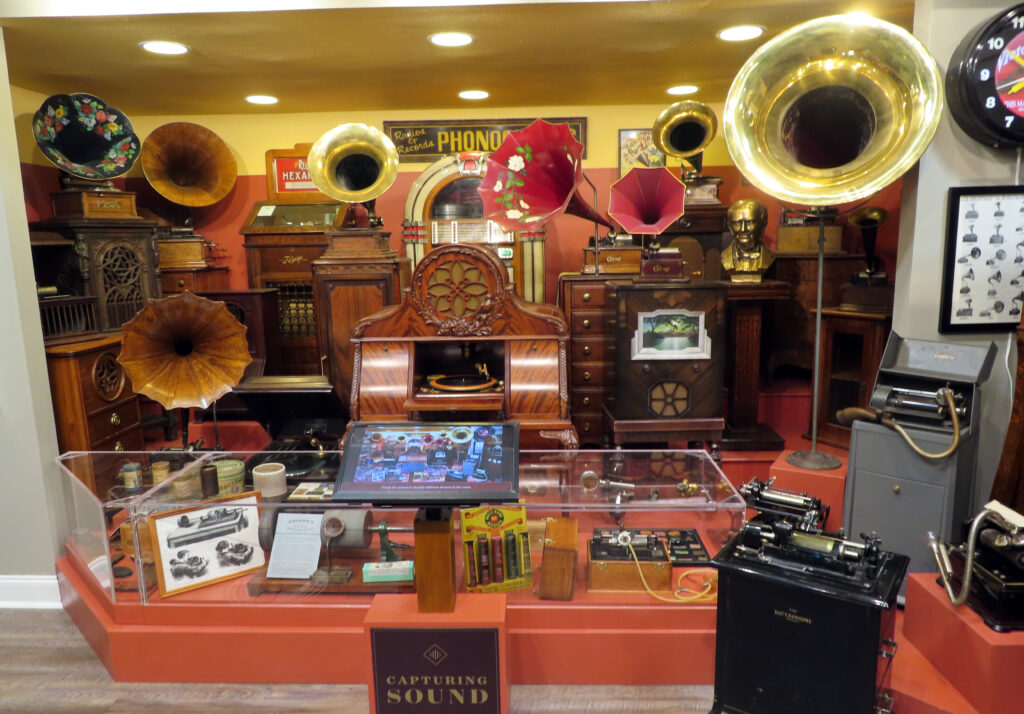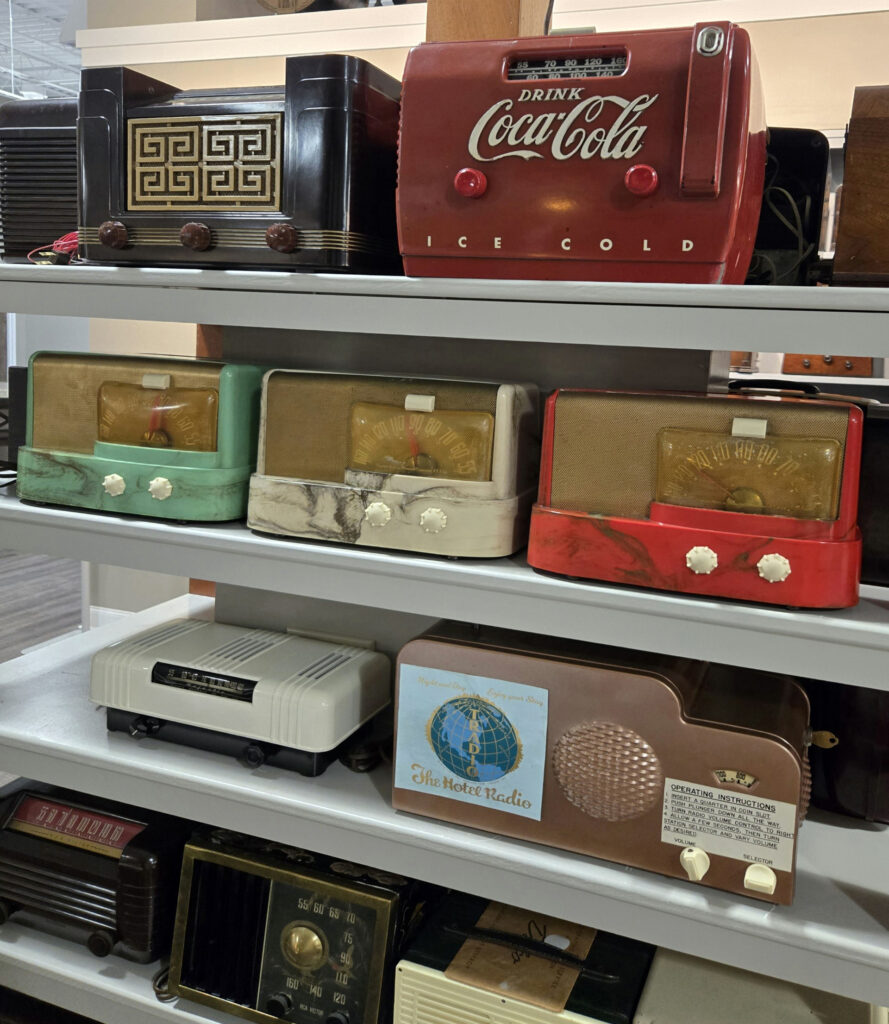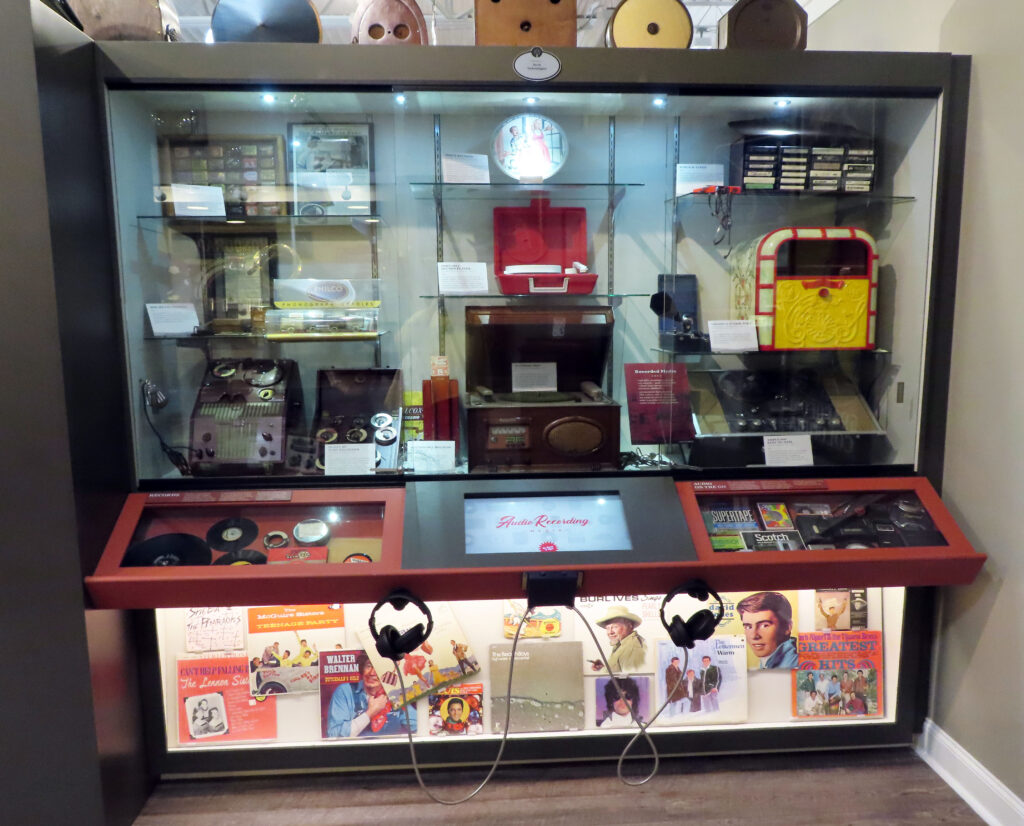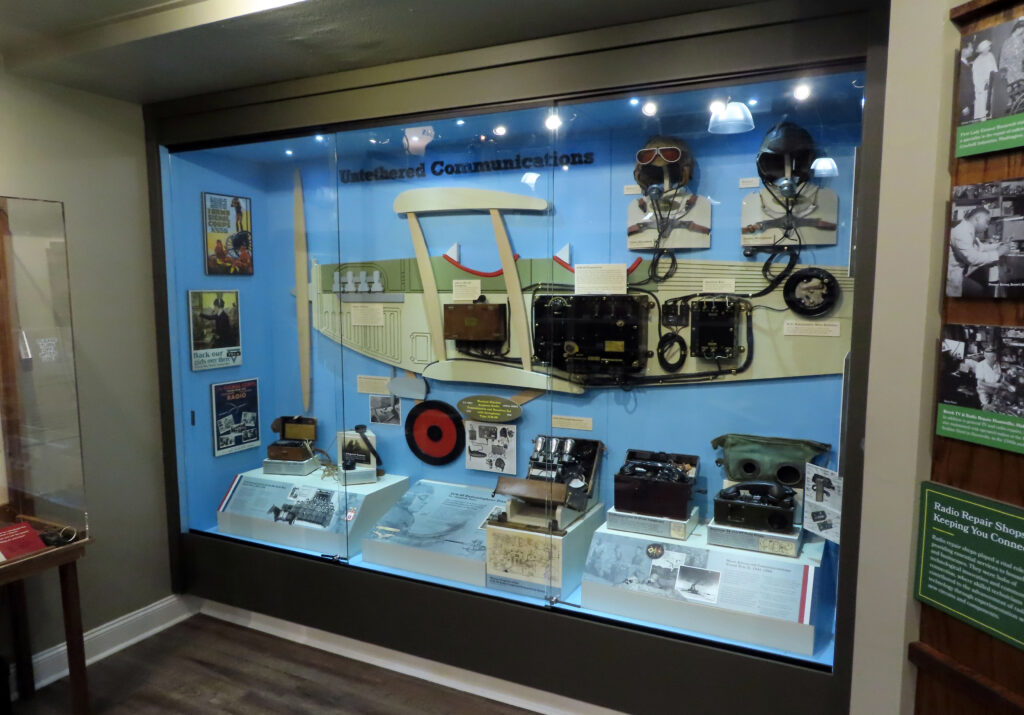SIGNALS Museum Traces the History of Communication
By Aaron Tanner
While the new SIGNALS Museum of Information Explosion is big on nostalgia, all visitors, regardless of their generation, will find something of interest here. From phonographs to phones (rotary, smart- and even the old “pay” kind) and short-wave radios to video games, the museum’s 2,000 artifacts highlight the evolution of mass communication, through an immersive and interactive experience.
The non-profit SIGNALS Museum opened its doors in Huntsville in March 2025. Inside the 15,000-square-foot facility are artifacts from the personal collection of Dr. Marc Bendickson, the former CEO of Dynetics, an information technology company headquartered in Huntsville.
Visitors see first-hand the progression of communication history through the museum’s collection. Images of Egyptian hieroglyphics and couriers on horseback from when Alabama first achieved statehood in 1819 at the beginning of the tour progress into displays of the first telephones and radios of the late 19th and early 20th centuries to televisions in the 1950s and ’60s, and eventually the high-tech computers, video gaming systems and smartphones
of today.

The museum’s companion app offers a 3D interactive experience featuring such characters as Benjamin Franklin and Thomas Edison, among others, to accompany the museum tour. In addition, several hands-on displays transport patrons to a bygone era: A two-person interactive game involving sending out an accurate telegraph message using Morse code; a 1920s telephone switchboard connecting local callers living in a pre-space age Huntsville; a plethora of phonographs and jukeboxes playing different sounds with a push of a button; and a 1960s-era mockup of a radio station control room where live deejays once spun records on turntables.
Also not to be missed is the HAM shack, where the local ham radio chapter meets to communicate with others worldwide using shortwave radio.
A Hometown Heroes wall of fame features several Huntsville innovators who played a vital role in global communication history, such as Olin King, who designed computers for IBM, and William Cummings, who founded one of the largest research parks in the United States that bears his name.

Other retro items on display include a pay phone from the days when public calls cost a quarter (or even a dime) and, preceding the once-popular electronics chain with the same name, a replica of a radio shack, where customers purchased radio parts separately.
SIGNALS Executive Director Gina James explains that before the widespread use of electricity in the 1800s and wireless technologies in the early 1900s, there was no such thing as “instant” communication that we are accustomed to today.
Radio, television, and the telephone became must-have household items not only for urban areas where the population had easier access to these products, but also for rural Americans who no longer had to travel miles to the nearest town or neighbor to get the news of the day. “No longer did people have to venture outside their homes to receive information,” James says.
Besides news, radio shows such as “The Grand Ole Opry” allowed those living far from cities to partake in the popular entertainment of the day.
The museum is a first of its type, not only in Alabama but in the Southeast.
Educational opportunities
Despite being open for only a short time, the attraction has already hosted several school field trips, as well as regional and even international visitors, thanks to social media. “We have had visitors from Zimbabwe and several European countries,” James says.
Various age levels and tech abilities can enjoy the Rocket City’s newest point of interest. “If you are technologically advanced, you can scan and interact with the characters, or if you are older, you can come in and experience instant nostalgia from your childhood,” James says.
One example: the rotary phone, familiar to anyone of a certain age, but a puzzler to the younger generations. “The kids will punch the number, not realizing you dial them,” James says.

She adds that the phone section is the museum’s most popular, since you can physically touch these devices that were once common in households.
Those seeking educational opportunities will appreciate the STEM workshop on the functions of electricity, the classroom space for guest lecturers, and the on-site library, where patrons can check out materials about electronics for research purposes.
James recalls one review from a parent about the lessons taught at the museum: “She came in with her two sons, and both children left wanting to be engineers.”
The expansion of programs and field trip opportunities at the museum is underway, along with the addition of rotating exhibits, a new simulation of a television station where museum visitors will learn about the equipment necessary to produce a newscast, and the completion of the AM radio control room display. In addition, the organization plans to add members-only events and expand its speaker series by creating a special speaker’s bureau.

It will also market its venue space, which currently holds 80 to 100 people and includes a kitchen, to the community.
Approximately 80% of the artifacts are in good working condition, thanks to an on-site lab where Bendickson and several retired engineers help restore them.
Alabama’s newest up-and-coming attraction reminds the younger generation that instant communication on portable devices is a recent development in world history. “It was not always handheld like it is today,” says James.
A visit to the SIGNALS Museum of Information Explosion allows for an appreciation of the inventors and innovators who made the quick advancement of communication technology over the past two centuries possible.




